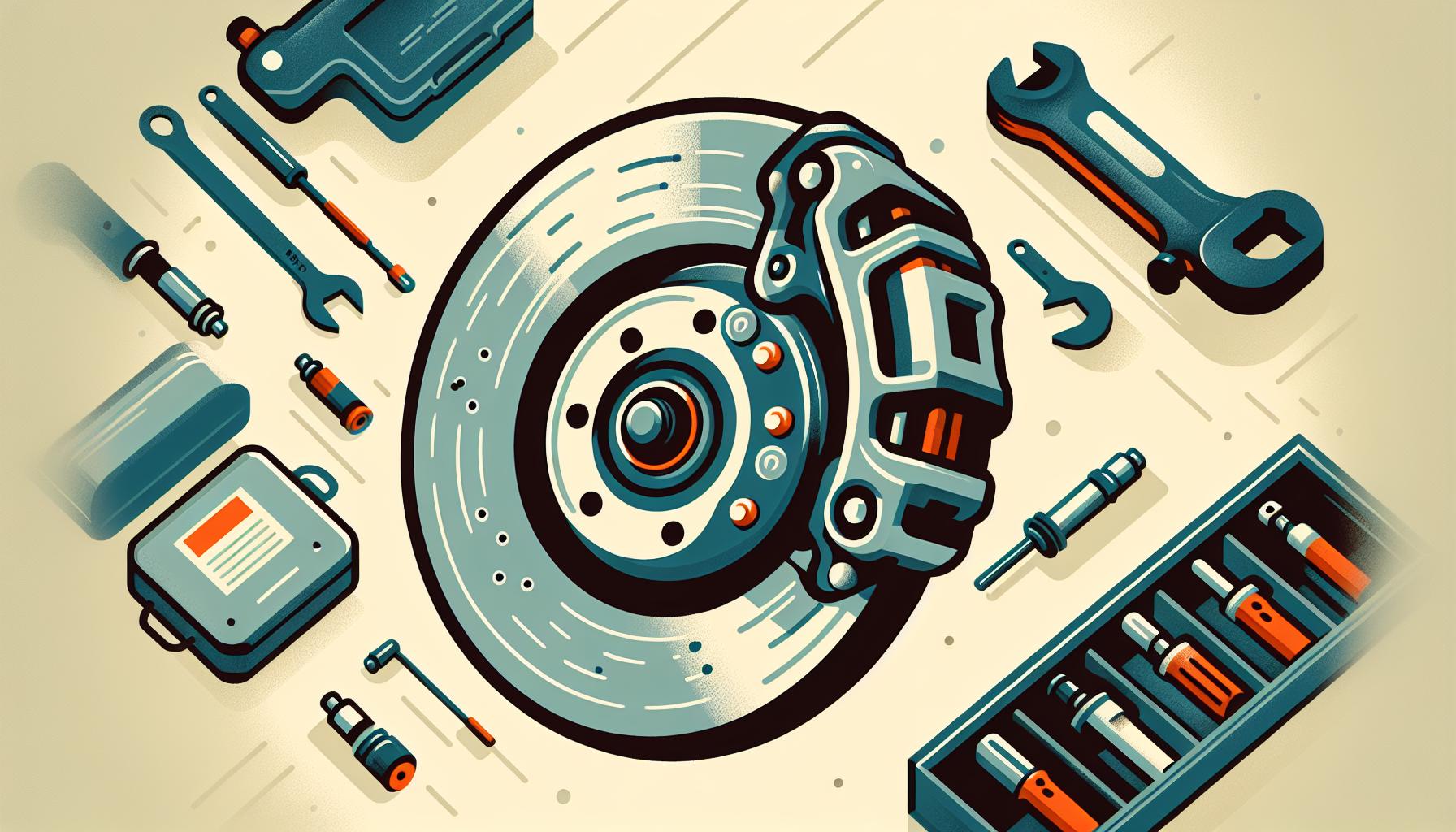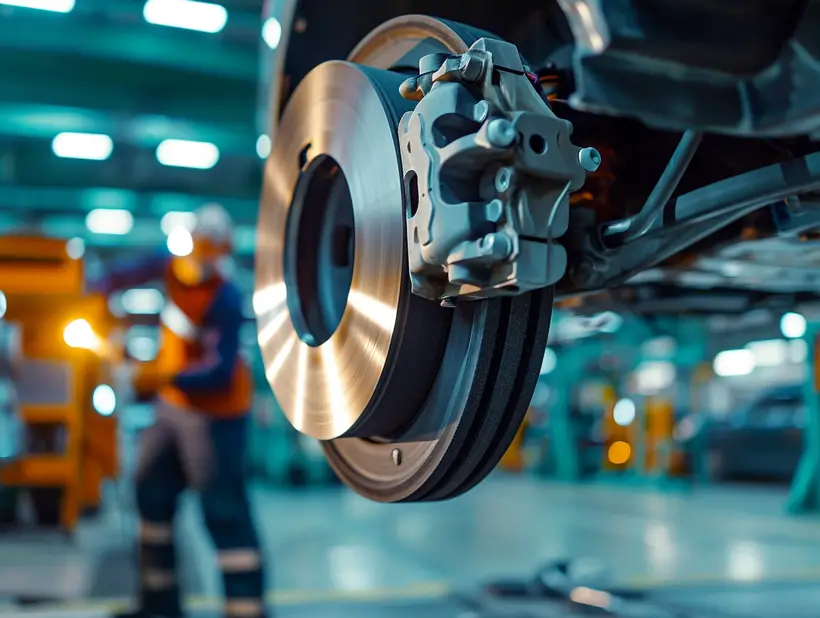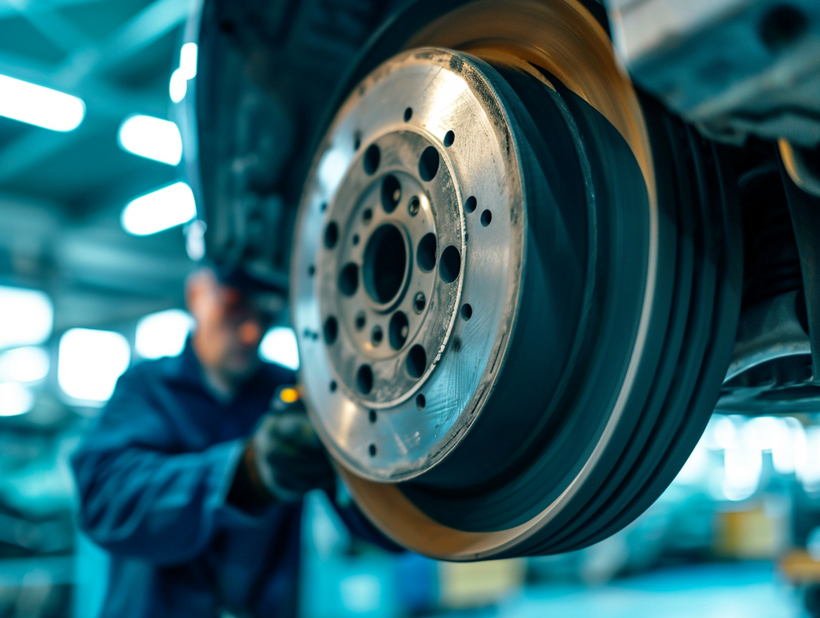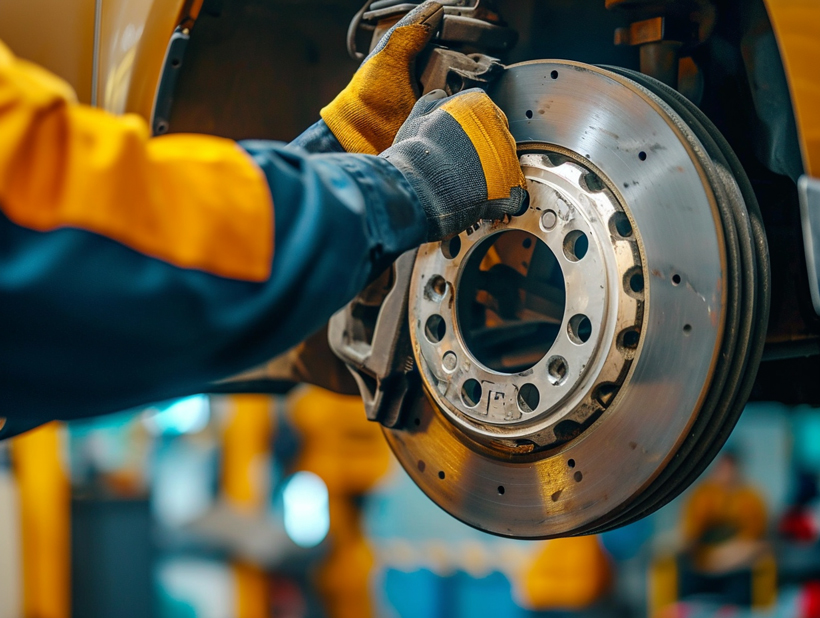Ever experienced that unnerving shudder when you hit the brakes? That’s brake pulsation, and it’s a red flag your car’s trying to wave down. I’ve been there, and trust me, it’s not something to ignore.
Understanding the root of those shakes and vibrations when braking is key to a smooth, safe ride. I’ll walk you through the common culprits and how to pinpoint the issue. Let’s dive into the world of brake diagnostics and get your car back to its smooth stopping glory.
Common Causes of Brake Pulsation
Brake pulsation often stems from issues with the brake components that are supposed to work seamlessly together. Through my experience and research, I’ve pinpointed several key factors that commonly lead to this problem.
Warped Brake Rotors
One of the primary culprits of brake pulsation is warped brake rotors. Heat and stress from repeated, heavy braking can cause the rotors to bend out of shape. This warping leads to uneven contact between the brake pad and the rotor, resulting in vibrations felt through the steering wheel or brake pedal. It’s critical to check the rotors for any signs of warping during a brake inspection.

Worn Brake Pads
Another common cause can be traced to brake pads. When these pads wear down unevenly or reach the end of their service life, they might not press against the rotors as intended, which can trigger brake pulsation. Ensuring brake pads are replaced at regular intervals can minimize this risk.
Sticking Calipers
Sticking brake calipers are also to blame at times. If a caliper sticks, the brake pads remain partially applied, causing excessive heat and potential rotor warping. Calipers should function smoothly, so any stickiness generally indicates the need for immediate attention.
Loose Wheel Bearings
Lastly, loose wheel bearings can contribute to the shakes and vibrations experienced during braking. Bearings play a pivotal role in the wheel assembly, and any looseness can lead to excessive rotor runout or wobble, thereby causing pulsation.
Regular maintenance and inspections can catch these issues early. Here’s what you can keep an eye on:
- Check rotor thickness and flatness
- Inspect brake pad wear routinely
- Verify caliper operation and lubrication
- Assess wheel bearings for any play
Understanding these common causes can significantly aid in diagnosing the problem behind brake pulsation. By keeping up with regular brake system maintenance, the likelihood of encountering shakes and vibrations when braking can often be reduced. Remember, your vehicle’s braking system is paramount to safe driving; it deserves your vigilant care.
Brake Rotor Warping

When dealing with brake pulsation, one of the common issues I’ve encountered is brake rotor warping. You might ask, what exactly is rotor warping? Well, it’s a term often used to describe the uneven wear or distortion of the brake rotors. This can happen due to excessive heat buildup or uneven tightening of the wheel bolts. Heat is the biggest enemy of brake rotors. During heavy braking, the temperature can skyrocket, causing the metal to expand and, over time, warp.
Another leading cause of warping is the improper installation of wheels. If lug nuts aren’t torqued correctly, it can lead to uneven pressure on the rotors, which contributes to warping. Regularly checking your wheel bolt torque with the prescribed settings in your vehicle’s manual is a simple preventative measure.
You may wonder how to tell if your rotors are warped. One tell-tale sign is a shaking or vibrating sensation through the steering wheel when you apply the brakes. This sensation might be mild at first but can become quite pronounced over time, potentially affecting your car’s overall handling. If you’re experiencing these symptoms, it’s crucial to have your brakes checked out by a professional. A mechanic can measure rotor thickness variation and runout using a dial indicator to confirm if the rotors are warped.
If the diagnosis confirms rotor warping, the fix may involve resurfacing the rotors to make them flat again or, in some cases, replacing them entirely. It’s worth noting that while resurfacing is a cost-effective solution, not all rotors are good candidates for this process ‚Äî especially if they’ve worn down below the minimum thickness recommended by the manufacturer.
To prevent future rotor warping, I always suggest adhering to proper braking techniques, avoiding heavy loads on your brakes, and ensuring your vehicle’s wheels are installed with the correct torque specifications. Also, investing in high-quality brakes designed to dissipate heat effectively can go a long way in extending the life of your brake system.
Brake Pad Deposits
While rotor warping is a prominent cause of brake pulsation, brake pad deposits are often an overlooked culprit. When I brake, the friction material from the pad can transfer and adhere to the rotor surface. This usually occurs when the brakes get hot and can lead to uneven rotor surfaces – essentially creating high and low spots on the rotor. The result? A vibration or shaking when I apply the brakes.
I’ve learned through experience that different pads and driving habits contribute to this problem. High-performance brake pads, for example, can be more susceptible to leaving behind these problematic deposits if used in regular street driving. This is because they’re designed to operate at much higher temperatures than what I would typically reach driving around town.

So, how do I spot brake pad deposit issues? The symptoms are similar to those of warped rotors:
- A shaking steering wheel when braking.
- Vibrations felt through the brake pedal.
- A pulsing sensation that correlates with the speed of the vehicle.
It’s essential for me to understand that these deposits can build up over time and don’t always signal an immediate issue. However, if I ignore the early signs, I might be facing a more extensive brake system repair down the line. Regular checks and maintenance, especially after intense driving conditions, could save me from costly repairs.
The fix for brake pad deposits involves a process called ‘bedding-in’ new pads, or if the issue isn’t too severe, having the rotors turned to remove the uneven spots. I always recommend using a shop with skilled technicians to ensure the job is done right.
Preventative measures are similar to those for avoiding rotor warping. I make sure to use the appropriate brake pads for my usual driving conditions and follow the manufacturer’s guidelines for bedding-in new brake pads. This ensures a proper and even transfer of friction material, which helps maintain smooth and consistent braking performance.
Tire and Wheel Issues
While examining common causes of brake pulsation, it’s crucial to consider the condition of tires and wheels. These components are integral to a vehicle’s braking system and often contribute to shakes and vibrations when overlooked.
Tire problems such as irregular wear or bulges can lead to a loss of contact with the road, resulting in a pulsating sensation during braking. Similarly, improperly inflated tires affect the vehicle’s stability and braking effectiveness. I always advise checking tire pressure regularly and ensuring they’re inflated to the manufacturer’s recommended levels.

Wheel-related issues shouldn’t be ignored either. A bent wheel or one that’s out of balance can cause significant vibrations, especially when braking at high speeds. It’s not uncommon for wheels to become unbalanced over time due to the loss of wheel weights, which are used to maintain even weight distribution around the wheel.
Another aspect to keep an eye on is the wheel bearing condition. Worn or damaged wheel bearings compromise wheel stability and can manifest as a wobbly sensation or a grinding noise that might be mistaken for brake pulsation.
Routine inspections play a pivotal role here. I suggest having the wheels balanced and aligned periodically according to service intervals. Additionally, during tire rotation, it’s a good opportunity to inspect for damage or uneven wear patterns.
Let‚Äôs not overlook the importance of ensuring the wheels are correctly torqued to the vehicle’s specifications. Incorrectly torqued wheel nuts can lead to warped rotors, further causing pulsation issues. It’s a small detail, but it’s one that can have a significant impact on the braking system’s performance.
Remember, finding the root cause of brake pulsation often requires a comprehensive look at the entire braking system, including tires and wheels. By maintaining these essential components, motorists can greatly reduce the chances of experiencing that unsettling shake when applying the brakes.
Diagnosing Brake Pulsation
Brake pulsation often manifests as a rhythmic throbbing through the brake pedal or a shaking of the steering wheel when I apply the brakes. When I notice these signs, it’s crucial to diagnose the underlying issue correctly. The first step is usually a visual inspection of the braking system. I look for wear patterns on the brake pads and discs, which might indicate uneven wear or damage. If the pads are worn unevenly, this can be a telltale sign of a caliper problem or a suspension issue that’s putting undue pressure on the braking system.

Next, it’s time to check the brake rotors. Rotors with too much runout or thickness variation can lead to pulsation since they cause inconsistent contact with the brake pads. I use a dial indicator to measure the rotor runout and a micrometer to check for thickness variation. Manufacturers typically provide specifications for these measurements, so I can determine if the rotors are within an acceptable range or if they require resurfacing or replacement.
Wheel bearings should also be on the diagnosis checklist. Loose or worn bearings might contribute to brake pulsation by causing excessive play in the wheel hub. I grasp each tire at the top and bottom and rock it to feel for any play in the bearings. Any noticeable movement could warrant a closer look by a professional.
Finally, I don‚ overlook the vehicle’s hydraulic system. Aged brake fluid can absorb moisture over time, leading to air bubbles that compress within the brake lines, and this could potentially cause a spongy brake pedal and pulsation. I‚ perform a brake fluid test and, if necessary, bleed the system or replace the fluid entirely to ensure it‚ performing each task as efficiently as possible.
By meticulously going through these diagnostic steps, I’m able to pinpoint issues that may be causing brake pulsation. Addressing these problems promptly helps maintain the performance and safety of the vehicle, ensuring a smoother, more reliable driving experience. Regular maintenance is key to preventing these issues from arising in the first place, keeping those high-speed stops as smooth as possible.
Conclusion
I’ve walked you through the critical steps to diagnose brake pulsation and it’s clear that the devil is in the details. Addressing brake issues promptly isn’t just about comfort‚ about safety. Remember that regular maintenance is your best defense against the shakes and vibrations that can turn a smooth ride into a nerve-wracking experience. Trust your instincts and don’t ignore the signs. Keep your vehicle in top shape and your braking system will thank you with performance you can rely on.
